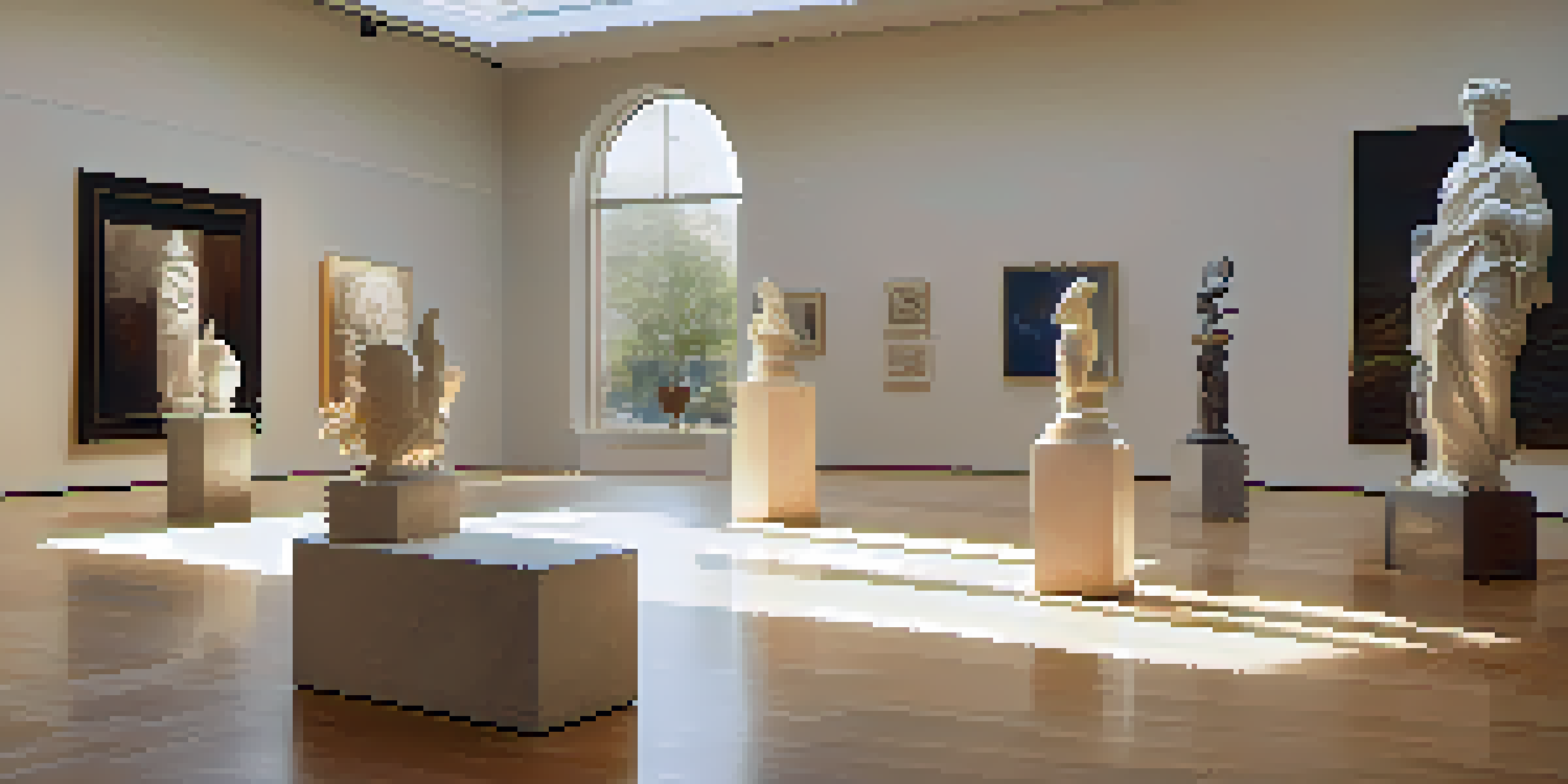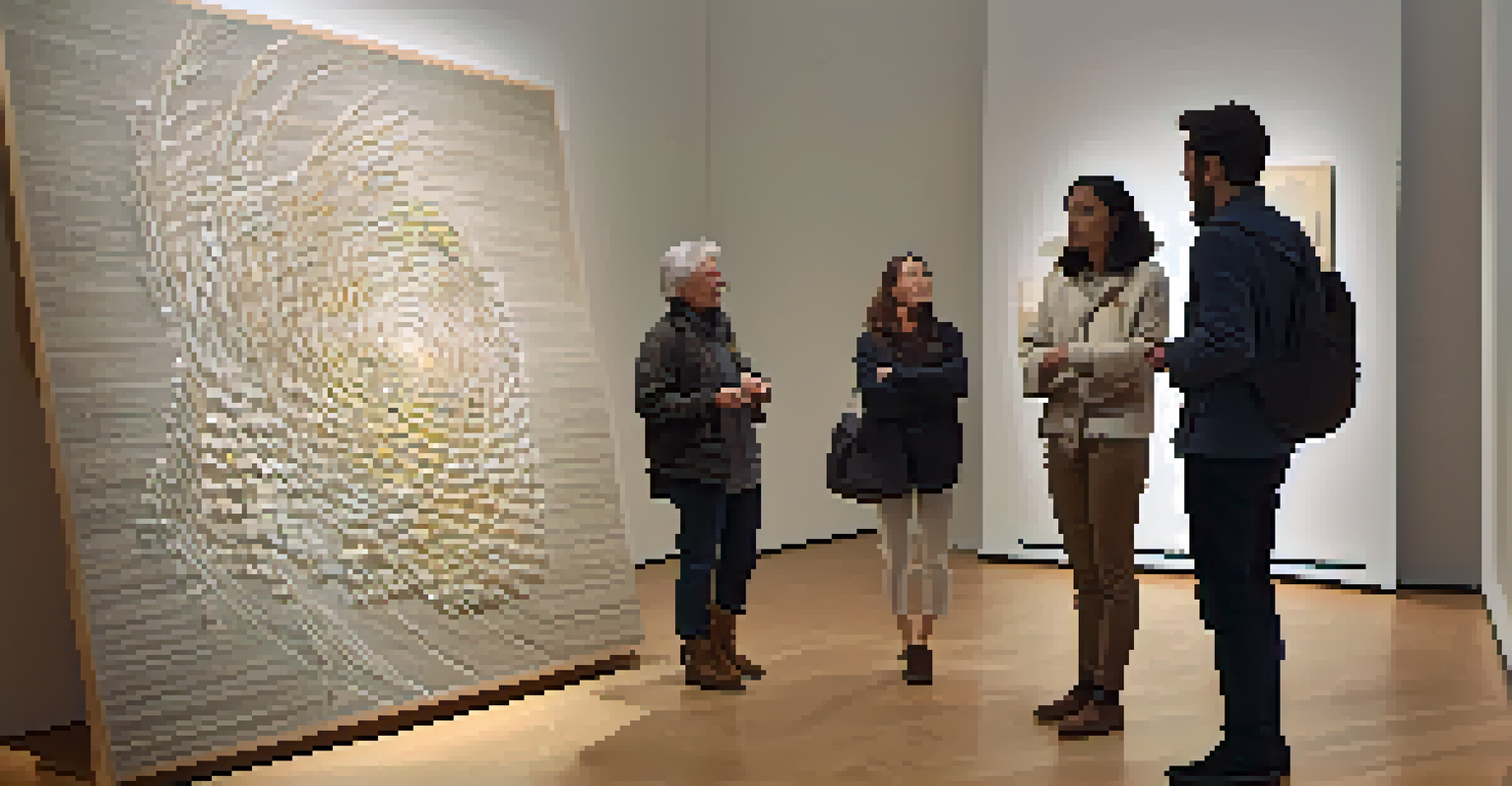How to Exhibit Your Sculptures: Tips for Artists

Understanding Your Audience: Who Will Visit Your Exhibit?
Before you start preparing for your exhibition, it’s crucial to understand your audience. Are they art enthusiasts, casual visitors, or potential buyers? Knowing who will walk through the door can guide your presentation and marketing efforts.
Art is not what you see, but what you make others see.
For instance, if your audience consists mainly of art collectors, you might focus on the craftsmanship and story behind each piece. On the other hand, a more general audience may appreciate engaging narratives or interactive elements that draw them in.
By tailoring your exhibit to the expected visitors, you can create a more inviting and meaningful experience that resonates with them, making the exhibition memorable.
Choosing the Right Venue: Space Matters!
Selecting an appropriate venue is one of the most critical decisions you'll make. The space should complement your sculptures, enhancing their visibility and appeal. Consider factors like lighting, layout, and accessibility.

For example, a spacious gallery with ample natural light can create a stunning backdrop for your work, while a cramped or poorly lit space might detract from your pieces. Additionally, think about the location's foot traffic and the type of events typically hosted there.
Know Your Audience for Success
Understanding your audience helps tailor your exhibit to create a meaningful and memorable experience.
Ultimately, the right venue can elevate your sculptures from mere objects to captivating experiences, drawing in more visitors and potential buyers.
Lighting Techniques: Highlighting Your Sculptures
Proper lighting is fundamental in showcasing your sculptures effectively. Good lighting can create shadows that enhance the details and textures of your work, drawing viewers' eyes to the intricacies you've crafted.
The best artist has no conception that a marble block does not contain within itself.
Consider using a combination of ambient, task, and accent lighting to achieve the best effect. For instance, spotlights can be used to highlight specific pieces, while softer ambient lighting can create a welcoming atmosphere throughout the exhibit.
Experimenting with different lighting setups prior to the exhibit can help you find the perfect balance, ensuring that your sculptures shine in their best light.
Creating Engaging Displays: Arrangement is Key
The way you arrange your sculptures can significantly impact how they’re perceived. A well-thought-out layout encourages visitors to explore and interact with your work. Think about flow: how will people move through the space?
For example, grouping similar pieces together can create a thematic experience, while strategically placing standout sculptures can draw visitors further into the exhibit. Also, consider the height and orientation of each piece, allowing viewers to engage with them from various angles.
Venue Selection is Crucial
Choosing the right venue enhances the visibility of your sculptures and complements the overall exhibition experience.
A thoughtful display can turn a simple exhibit into an immersive journey, inviting visitors to connect with your art on a deeper level.
Promoting Your Exhibition: Get the Word Out!
Promotion is essential to ensure your exhibition attracts a crowd. Start by leveraging social media platforms to share sneak peeks of your sculptures and the behind-the-scenes preparations. Creating buzz ahead of time can pique interest and encourage attendance.
Additionally, consider reaching out to local art communities, galleries, and influencers who might help spread the word. Collaborating with local businesses or hosting events leading up to the exhibition can also enhance visibility.
Effective promotion not only brings more visitors to your exhibit but also elevates your profile as an artist, opening doors for future opportunities.
Engaging with Visitors: Build Connections
Interacting with visitors during your exhibition can make a lasting impression. Consider hosting guided tours or Q&A sessions to explain your creative process and the stories behind each piece. This personal touch can foster a deeper connection with your audience.
Don't underestimate the power of casual conversations—these can lead to valuable feedback and even potential sales. Be open to discussing your inspirations and techniques, as this transparency can enhance viewers' appreciation of your work.
Engage and Follow Up with Visitors
Interacting with visitors and maintaining connections after the exhibition can cultivate a supportive community around your art.
Creating a welcoming atmosphere encourages visitors to linger, engage, and ultimately think more fondly of your art.
Follow-Up After the Exhibition: Keep the Momentum Going
After the exhibition wraps up, don’t let your connections fade away. Send thank-you notes or emails to attendees, expressing your gratitude for their support. This gesture reinforces your relationship and keeps you in their minds.
You can also share highlights from the exhibition on your social media, including photos and visitor testimonials. This not only showcases the success of the event but also builds anticipation for future exhibitions.

Maintaining these relationships can lead to future opportunities, collaborations, and a growing base of supporters who are eager to see your next artistic endeavor.
Reflecting on Your Experience: Learn and Grow
Every exhibition is an opportunity for growth. Take time to reflect on what went well and what could be improved. Gathering feedback from visitors and fellow artists can provide insights that enhance your future exhibits.
Consider keeping a journal where you document your experiences, challenges, and successes. This reflection can serve as a valuable resource as you continue to evolve as an artist.
By learning from each experience, you not only improve your exhibition skills but also deepen your understanding of your art and its impact on your audience.